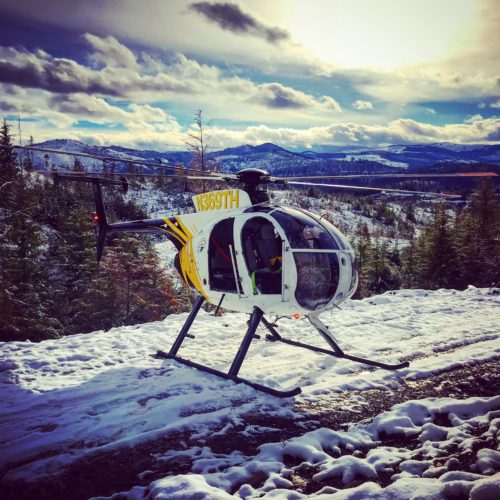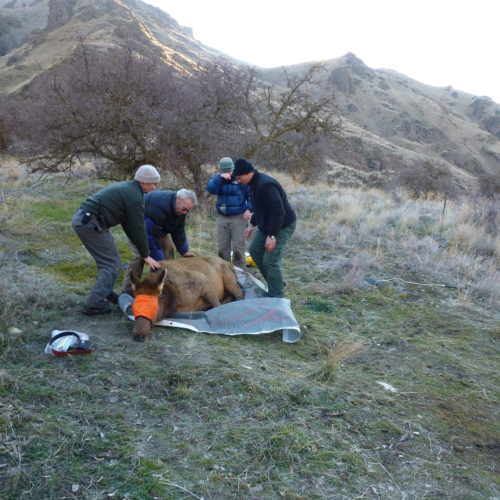Elk populations have declined across large areas of the Clearwater Basin during the last three decades. Population declines have coincided with a loss of early-seral habitat, increased human pressures, and increasing predator populations. Other Wildlife species that depend on openings in the forest cover are also diminished. Restoration of the habitat that supports elk is essential for ecosystem health for ungulates and smaller mammals and bird life that depend on early seral habitat. In 2013, the Clearwater Basin Collaborative, in partnership with federal, state, and private collaborators, initiated a habitat restoration project to explore ways to restore elk populations and benefit other wildlife in the Clearwater Basin






This project aims to understand elk population dynamics by assessing animal fitness, nutritional status, and habitat use across the Basin. To date, approximately 250 cow elk have been captured and radio-collared. Radio-collars allow collaborators to evaluate explicit habitat use, connects winter and summer ranges, facilitates cause-specific mortality, and promotes recapture to compare seasonal body condition assessments. Upon capture, other information collected includes age, pregnancy rate, body fat measurements, genetic information, internal parasite loads, and trace elements and selenium. Preliminary results indicate elk limitations in animal condition are primarily associated with summer nutrition as opposed to winter.
To date, six models have been developed to rate nutritional value of plant communities in the Clearwater Basin. Preliminary results suggest radio-collared cows selected the highest modeled nutrition in our study. Additional data on nutritional value of plant communities were obtained in 2016 and 2017, and the completion of this part of the project will be used to improve knowledge of summer nutrition and structure of nutrition models. Restoration planning for early-seral habitats beneficial to elk and other wildlife is proceeding based on current results from the elk project. The overall project priority, however, is to collect valuable data that will inform landscape restoration of early-seral habitats to benefit elk and other wildlife. Coordination with the Nez Perce-Clearwater National Forest is underway to integrate results in restoration planning for early-seral wildlife
Assessments for nutritional value of plant communities
have been conducted throughout the Clearwater Basin.
Study areas for radio-collared cow elk includes:
St. Joe (Game Management Unit 6),
North Fork of the Clearwater River (Game Management Unit 10),
Dworshak (Game Management Unit 10A)
Craig Mountain (Game Management Unit 11),
Lochsa (Game Management Unit 12),
Riggins (Game Management Unit 14)
South Fork of the Clearwater River (Game Management Unit 15)
The Clearwater Basin Collaborative and UI Extension hosted an educational program highlighting the results of this research along with presentations on the history of elk and elk management in the Clearwater Basin. The recordings from that two-part series are available to the public:
